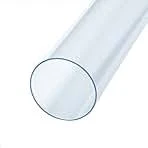Nov . 01, 2024 17:11 Back to list
Techniques for Connecting HDPE Pipe Efficiently and Effectively in Various Applications
HDPE Pipe Jointing An Overview
High-Density Polyethylene (HDPE) pipe jointing is a crucial aspect of modern infrastructure, offering a reliable solution for various applications in water supply, sewage systems, and industrial processes. HDPE, known for its excellent durability and resistance to chemicals, UV radiation, and impact, has become widely favored in the construction and utility sectors.
HDPE Pipe Jointing An Overview
Electrofusion Jointing is a widely used method that employs electric heating elements embedded in the pipe fittings. During installation, an electric current is passed through the elements, melting the plastic and allowing the two surfaces to fuse together as they cool. This method ensures a homogeneous joint, providing excellent mechanical strength and leak resistance. Electrofusion is particularly advantageous in applications requiring high reliability, such as gas and water distribution.
hdpe pipe jointing

Socket Fusion involves heating the ends of two HDPE pipes and then pushing them together to form a joint. Typically used for smaller diameter pipes, this method is fairly straightforward and economical. It is crucial to maintain proper alignment and temperature control to avoid weak joints, which can lead to future failures.
Butt Fusion is one of the most robust jointing techniques, often used for larger diameter pipes. In this method, the ends of two pipes are heated until they melt and are then pressed together under controlled pressure. The result is a highly durable joint with minimal risk of leakage. Butt fusion is particularly effective in high-pressure applications, making it a popular choice for municipal water systems and industrial pipelines.
The choice of jointing method largely depends on factors such as pipe size, application, and environmental conditions. Each technique has its advantages, but proper training and adherence to standards are vital for ensuring successful jointing and long-term performance.
In summary, HDPE pipe jointing plays a critical role in the longevity and efficiency of pipelines. With various techniques available, practitioners must carefully evaluate their options to select the most appropriate method, thereby ensuring the reliability and safety of water and gas distribution systems. As infrastructure needs grow, the importance of effective HDPE jointing will continue to be a pivotal focus in engineering and construction sectors.
-
High-Quality PPR Pipes and Fittings Durable ERA PPR & PVC PPR Solutions
NewsJul.08,2025
-
Black HDPE Cutting Board - Durable, Non-Porous & Food Safe HDPE Plastic Cutting Board
NewsJul.08,2025
-
High-Quality CPVC Panel Durable HDPE & PVC Panels Supplier
NewsJul.08,2025
-
Double PE Welding Rod Supplier - High Strength, Durable & Versatile Welding Solutions
NewsJul.07,2025
-
High-Quality PVC-O Pipe Supplier Durable 75mm PVC Pipe & Connections Leading PVC Pipe Company
NewsJul.07,2025
-
HDPE Drainage Pipe Supplier – Durable & Corrosion-Resistant Solutions
NewsJul.06,2025

